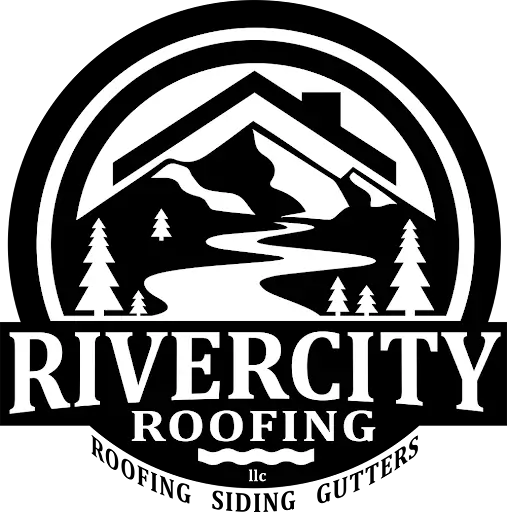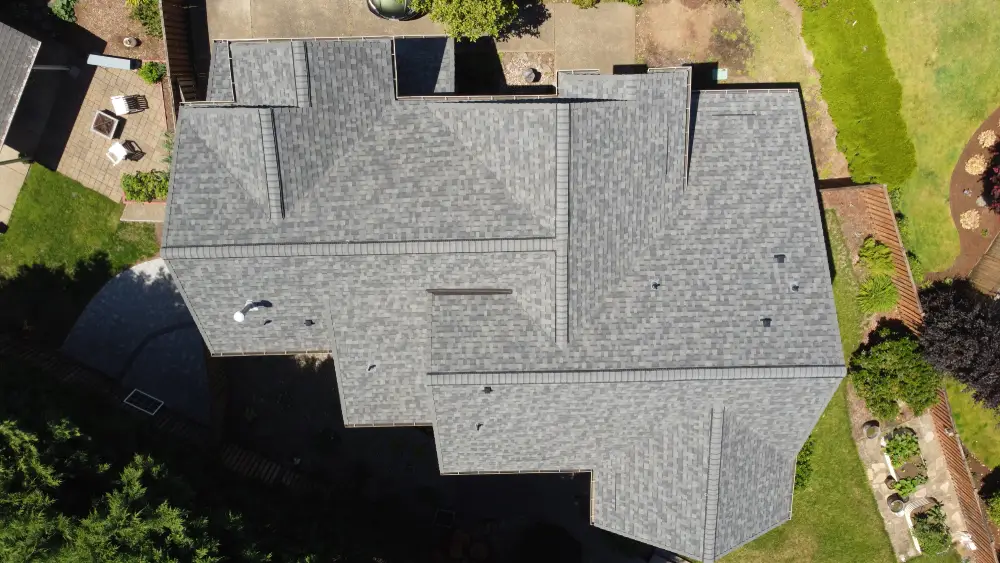The roof is a critical component of any home, protecting it from the elements and ensuring the comfort of its inhabitants. In Oregon, where weather conditions can be particularly challenging, understanding how long does a roof last is crucial for homeowners. This knowledge helps in planning for roof maintenance, repairs, and eventual replacement, potentially saving thousands of dollars in the long run.
Oregon’s climate, characterized by heavy rainfall and occasional extreme weather events, can have a significant impact on roof lifespan. Factors such as the roofing material used, installation quality, and regular maintenance all play a role in determining how long a roof will last in the state. This guide will explore common roofing materials in Oregon, discuss the factors affecting roof longevity, and highlight signs that indicate a roof might need replacement. By the end, you will have a better understanding of what to expect from your roofs and how to maximize their lifespan in Oregon’s unique environment.
Common Roofing Materials in Oregon
Oregon’s unique climate and environmental conditions influence the choice of roofing materials used in the state. Homeowners in Oregon have several options to choose from, each with its own set of advantages and considerations. Here are some of the most common roofing materials used in Oregon: Asphalt roofs, for instance, offer a good balance of cost and durability, with higher-grade options like architectural shingles providing improved longevity compared to other materials.
Asphalt Shingles
Asphalt shingles have been a popular choice for residential roofs in Oregon since the 1920s. They are made of a fibreglass base coated with asphalt and covered with weather-resistant mineral granules. Asphalt shingles are widely used due to their durability, affordability, and ease of installation.
There are three main types of asphalt shingles:
- 3-tab shingles: The most economical option, lasting 15-30 years.
- Architectural shingles: Also known as dimensional shingles, these mid-range options last 20-30 years.
- Premium shingles: The highest quality asphalt shingles, lasting 25-40 years.
When considering the roof’s life expectancy, asphalt shingles generally offer a shorter lifespan compared to materials like metal or tile, but their cost-effectiveness and ease of maintenance make them a popular choice.
Asphalt shingles hold up well in wet environments like western Oregon’s and look good on various home styles, from Victorian to modern.
Metal Roofs
Metal roofs have gained popularity in Oregon due to their exceptional durability and longevity. They can last up to twice as long as other roofing materials, making them an excellent long-term investment for homeowners. Metal roofs offer several advantages:
- Fire resistance
- Moisture resistance
- Minimal upkeep
- Energy efficiency (can reduce cooling costs by up to 25%)
- Sustainability (made from 25-95% recycled content and 100% recyclable)
Proper ventilation is crucial in maintaining the longevity of metal roofs, as it helps prevent moisture buildup and heat damage, ensuring the roof’s integrity over time.
Metal roofs can withstand extreme weather conditions, including high winds up to 180 mph, heavy snow, and hail. They also reflect sunlight, helping to keep homes cooler during hot days.
Cedar Shake Roofs
Cedar shake roofs have been a popular choice in Oregon for their natural beauty and durability. They are made from cedar wood, which has natural preservatives that make it resistant to UV rays and insect damage. Cedar shakes are particularly well-suited to Oregon’s climate because they don’t easily warp or shrink in humid conditions.
Key features of cedar shake roofs include:
- The lifespan of 30-50 years with proper maintenance
- Ability to withstand winds exceeding 120 mph
- Natural insulation properties
- Unique, rustic appearance that complements the Pacific Northwest esthetic
However, cedar shake roofs require regular maintenance to prevent issues such as moss growth, rot, and splitting. Homeowners should schedule maintenance checks every five years to ensure the longevity of their cedar shake roof. Additionally, addressing roof leaks promptly is crucial to prevent extensive damage and costly repairs.
Factors Affecting Roof’s Lifespan in Oregon
Climate and Weather
Oregon’s unique climate has a significant impact on roof longevity. The state experiences heavy rainfall, occasional extreme weather events, and varying temperatures throughout the year. These conditions can accelerate wear and tear on roofing materials.
In Portland, for instance, the heavy winds, rain, sleet, and snow can damage roofs, necessitating repairs or replacements sooner than in milder climates. The constant exposure to moisture creates ideal conditions for moss and algae growth, which can deteriorate roofing materials if left unchecked.
Temperature fluctuations in Oregon also play a role. The expansion and contraction of roofing materials due to these changes can lead to cracks and warping over time. Additionally, the freeze-thaw cycle in winter months can cause trapped moisture to expand and contract, further stressing the roof’s structure.
Regular maintenance is crucial in extending roof life in Oregon’s challenging climate.
Installation Quality
The quality of installation has a substantial influence on how long a roof lasts. High-quality roof installers use superior materials and take the time to properly install a roof, ensuring it can withstand Oregon’s challenging weather conditions for decades. Hiring a qualified roofing contractor in Oregon for proper installation is essential to avoid issues related to climate conditions and poor installation.
Professional installation is crucial for several reasons:
- Proper sealing and flashing to prevent water intrusion
- Correct ventilation to regulate temperature and moisture levels
- Appropriate underlayment installation to provide an additional barrier against the elements
Maintenance and Care
Regular maintenance is key to extending a roof’s lifespan in Oregon. Homeowners should consider the following maintenance practices:
- Schedule roof cleanings every 3-5 years to remove debris and moss
- Conduct regular inspections to detect potential issues early
- Clean gutters to prevent water buildup and ensure proper drainage
- Remove overhanging branches that could damage the roof during storms
Proper ventilation also plays a crucial role in maintaining roof integrity and longevity by preventing moisture buildup and heat damage.
Professional roof services offer expertise in proper maintenance techniques and can help homeowners stay ahead of potential problems. Regular care is always less expensive than major repairs or premature replacement due to neglect.
By addressing these factors, Oregon homeowners can significantly extend their roof’s lifespan, potentially by 30 to 50%. This proactive approach not only protects the home but also saves money in the long run by avoiding costly repairs and premature replacements.
Signs Your Oregon Roof Needs Replacement
Age-Related Wear
The lifespan of a roof in Oregon depends on the materials used and how well it has been maintained. Asphalt shingle roofs, which are common in the state, typically last 20-30 years. However, other materials can have longer lifespans:
- Tile roofs: 40-50 years
- Cedar roofs: 30-50 years (depending on thickness grade)
- Presidential, heavily-laminated roofs: 40-50 years
Even if a roof hasn’t reached its expected lifespan, it’s important to be aware of age-related signs of wear. For instance, asphalt shingles may start losing granules, which can accumulate in gutters. This granule loss signals the end of the shingles’ lifespan and can affect the roof’s functionality. When age-related wear becomes apparent, it is crucial to consider investing in a new roof to ensure the safety and integrity of your home.
Visible Damage
Visible damage to a roof can be a clear indicator that replacement is necessary. Homeowners should look out for:
- Cracked, damaged, or curled shingles
- Missing shingles, creating gaps in roof coverage
- Damage around chimneys or skylights
- Loose or rusted flashings
- Exposed fasteners
- Dips or sagging areas in the roof
It is crucial to address visible signs of roof leaks promptly to avoid more extensive damage and costly repairs.
For cedar roofs, sun damage can cause burns from UV rays, making the shakes thinner over time. Tile roofs may show signs of wear when their protective coating softens and wears away, leading to cracking.
Interior Signs of Roof Failure
Sometimes, signs of roof damage are more apparent from inside the home. Homeowners should be alert to:
- Water stains or dark spots on ceilings or walls
- Leaks or damp spots, which may appear as yellow or brown stains
- Bubbling paint on walls or ceilings
- Drips around light fixtures
- Visible daylight through the roof in the attic
- Unexplained drafts or sudden increases in energy bills
These interior signs often indicate that water has already penetrated the roof’s protective layers, potentially causing structural damage or mold growth. Addressing these issues promptly is crucial to prevent further damage to the home’s interior and to maintain a safe living environment. Additionally, neglecting these signs can significantly reduce the roof’s life expectancy.
Conclusion
Roofs in Oregon face unique challenges due to the state’s climate and weather conditions. Understanding these factors and maintaining regular upkeep has a significant impact on a roof’s lifespan. By choosing the right Roofing Materials, ensuring quality installation, and staying on top of maintenance, homeowners can extend their roof’s durability and protect their investment. This approach not only safeguards the home but also helps to avoid costly repairs and premature replacements.
Being aware of the signs that indicate a roof needs replacement is crucial to maintaining a safe and comfortable living environment. From age-related wear to visible damage and interior signs of failure, catching these issues early can prevent more extensive damage to the home. By staying informed and proactive, Oregon homeowners can make smart decisions about their roofs, ensuring their homes remain protected for years to come.


